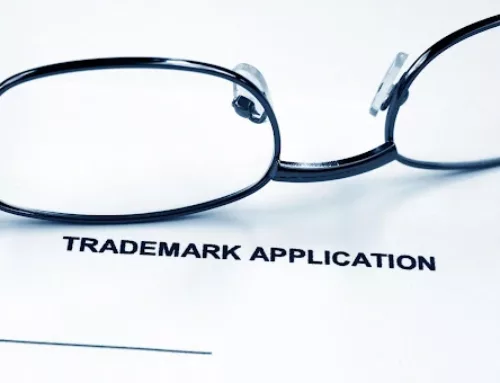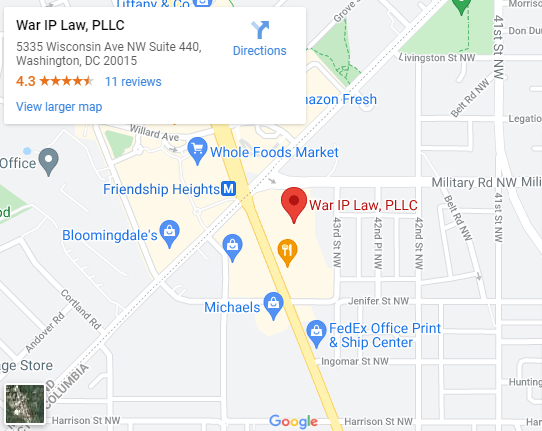Building a brand takes time and money. For this reason, it’s important to get legal protection for your intellectual property investment. If you want to protect your business’s identifying marks, it benefits you have a good offense and defense.
Offense: The Right Trade Name
Your offense involves choosing your preferred business name, logo, and slogan. Take time to figure out a strong brand name that distinguishes your company and that your competitors will find difficult to steal. Do a trademark search to ensure that it isn’t being used by any competitor in the field of your business, or a similar business, and then file for trademark registration at the United States Patent and Trademark Office (USPTO).
 Keep in mind to choose a trademark with a strong legal status. A trademark is easier to protect if it involves a distinctive and unique name. Stay away from generic words. For instance, a generic term like “sandwich” is not really protectable. On the other hand, “Pasta Pomodoro” is both suggestive and descriptive, allowing stronger trademark protection. The strongest trademarks usually come with fanciful and arbitrary names or names that are taken out of context. Think Apple computers and Xerox copy machines. Trademarks aren’t just about names either. They involve designs too.
Keep in mind to choose a trademark with a strong legal status. A trademark is easier to protect if it involves a distinctive and unique name. Stay away from generic words. For instance, a generic term like “sandwich” is not really protectable. On the other hand, “Pasta Pomodoro” is both suggestive and descriptive, allowing stronger trademark protection. The strongest trademarks usually come with fanciful and arbitrary names or names that are taken out of context. Think Apple computers and Xerox copy machines. Trademarks aren’t just about names either. They involve designs too.
Once you’ve picked your mark, the next step is to ensure that it is not already used for similar products and services. You can first go to the trademark and patent office website and search registered trademarks via the Trademark Electronic Search System. While helpful, you will have to venture further and do a thorough search beyond the USPTO website’s registered trademark database since it wouldn’t include common law trademarks or lead you to confusingly similar marks. Common law marks belong to businesses that earned the legal right to a name or another identifying mark because they were the first to use it, even without registering a trademark. To avoid treading on somebody’s common law rights, it’s best to engage the services of a trademark attorney who can do comprehensive research for you.
Defense: Being a Trademark Owner
Defense starts when you’ve begun to use your trademark. A good defense consists of three strategies:
-
Correct trademark usage
Once you’ve started using a trademark or service mark, let the world know that your brand or product name is protected by affixing the trademark symbol (™) next to it. Upon obtaining federal registration, you can use the registered trademark symbol (®).
While you don’t need to put the respective symbol every time you use the identifying mark, it’s important that you do use it prominently from time to time. When it comes to written documents such as promotional materials, you need only use the symbol with the first mention of the mark.
Take note as well that it is necessary that you use your identifying mark with the goods and/or services you’ve applied to register a trademark with. Using it for other goods and services will not help in registering your mark for the claimed goods and services.
-
Vigilance against possible trademark infringement
Keep track of what words, phrases, and images your competitors are using to advertise their products. It’s customary for businesses to monitor what their competitors are up to, so this wouldn’t entail that much more work.
Google Alerts is a useful tool for notification of mentions of your trademark, including misspelled versions and similar phrasing
-
Exercise of trademark rights against those who infringe
If you suspect somebody of infringing on your trademark, you have to quickly decide whether to address the issue or not and how aggressively you want to go after the infringer. Your response would likely be influenced by the following factors:
- The seriousness of the infringement.
- The strength of your trademark.
- The budget and resources for acting.
You can base the gravity of the infringement action on the threat of damage to your business. For instance, if you’re the owner of a trademark for a restaurant called “Joe’s Barbecue,” and you encounter a product called “Joe’s Pickles,” it’s only worth your trouble to take issue if you have intentions of eventually selling menu items from the restaurant at grocery stores. If you have no such plans, you best leave it alone.
In deciding to enforce your intellectual property rights, you can ask a lawyer specializing in trademark law to draft a cease-and-desist letter informing the violator of your marks and demanding that use of confusingly similar marks for similar goods or services be stopped.
Maintenance: Timely Renewal
A registered mark isn’t forever. Trademark registration should be renewed as required by law. This means filing renewal forms and specimens of use as well as paying renewal fees to USPTO during the fifth and ninth years after registration, and then every ten years after that. This is how you maintain your IP investment. Failing to renew equates to the trademark holder abandoning the exclusive rights to the identifying marks.
Need Help with Trademarks, Patents, and Copyrights? Call an IP Attorney Now!
Whether you want to file a trademark or ensure protection for any form of intellectual property, it’s best to approach a law firm for legal advice and assistance. Call us at War IP Law to speak with a trademark attorney today.





